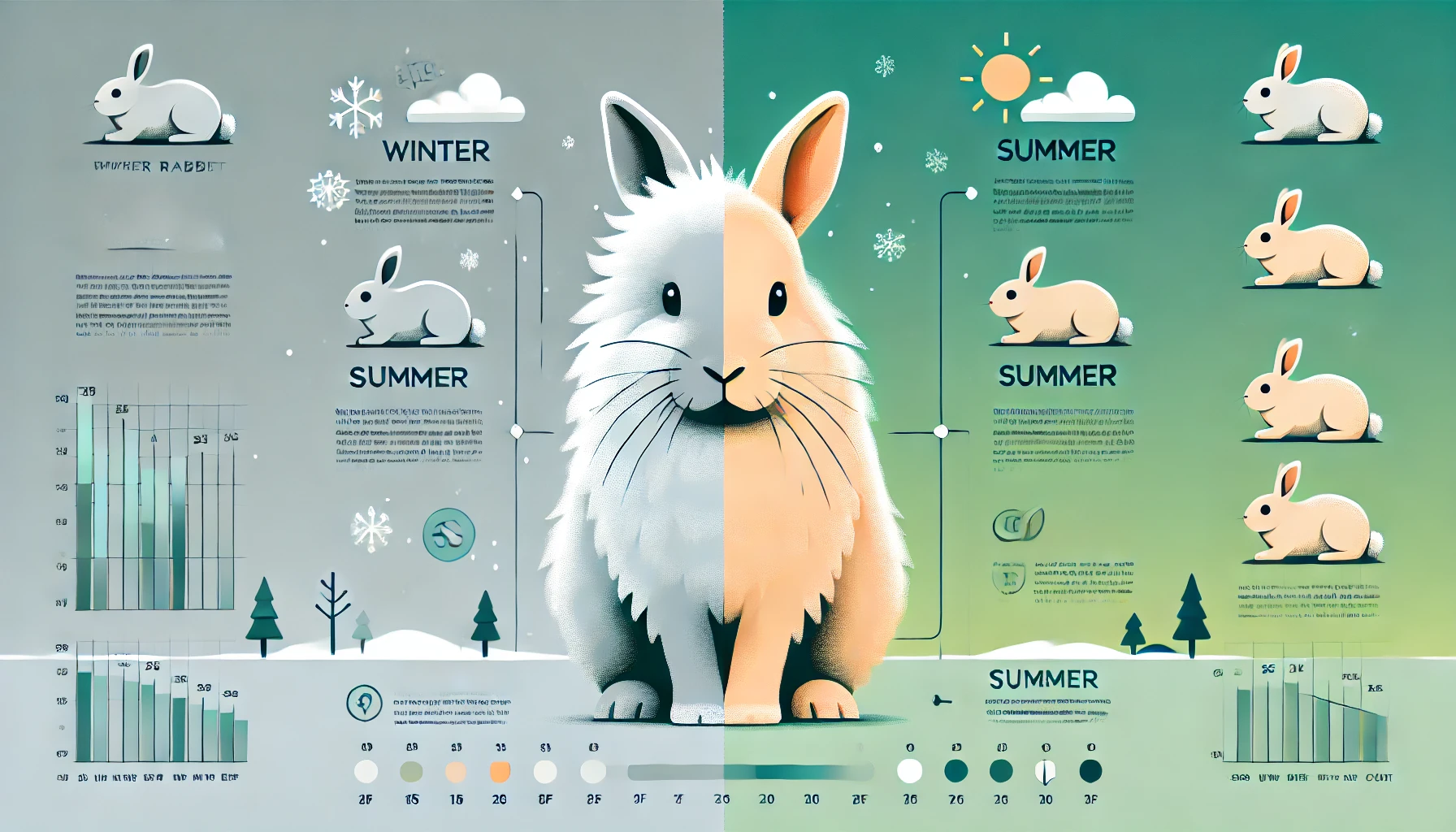Rabbits are adorable, playful, and fluffy creatures, but there’s one thing that can be a bit overwhelming for their owners—shedding. If you’ve noticed that your rabbit is shedding excessively, you might be wondering why it’s happening and how to manage it. Shedding is a natural process, but understanding its causes and how to care for your rabbit during this time is crucial for its well-being.
In this article, we’ll explore the common reasons why your rabbit might be shedding so much, how to manage it effectively, and how you can ensure your pet stays comfortable throughout the process. Along the way, we’ll break down the information using visuals, infographics, and tips for making sure you’re providing the best care for your furry friend.
Understanding Rabbit Shedding
What Causes Rabbit Shedding?
Rabbits shed their fur regularly as part of a natural process. Their coats change with the seasons, and this shedding allows them to maintain a healthy, temperature-regulated body. Here’s a breakdown of the most common reasons why your rabbit might be shedding more than usual:
Seasonal Shedding (Molt):
Rabbits typically shed more in the spring and fall as their coats adapt to changing temperatures. This seasonal shedding is often more noticeable than during other times of the year.
Age:
Younger rabbits, especially those under 6 months old, might shed more as they transition from their baby fur to adult fur.
Diet and Health:
Poor nutrition or underlying health issues can affect shedding. A rabbit’s diet plays a massive role in its coat condition. Lack of essential nutrients, such as Vitamin A, can lead to excessive shedding or poor coat health.
Stress and Environment:
Rabbits can shed more when they are stressed or uncomfortable. Changes in their environment, such as loud noises, new animals, or even being moved to a new home, can increase shedding.
How Much Shedding Is Normal?
While some shedding is entirely normal, especially during the seasonal molt, it’s essential to know what constitutes excessive shedding. Rabbits naturally lose a small amount of fur every day, but if you’re finding clumps of fur around your home or noticing bald patches on your rabbit, it could be a sign of an underlying issue.
Types of Rabbit Fur and Their Shedding Patterns
There are different types of fur that rabbits can have, each of which has its shedding pattern:
- Normal Fur: This is the most common type of fur and is typically seen in rabbits like the Dutch, Rex, and Flemish Giant. These rabbits shed periodically throughout the year.
- Double Coat: Rabbits like Angora and Lionhead have a dense undercoat and longer guard hairs. This breed sheds heavily twice a year, during the spring and fall months.
- Short Coat: Rabbits with short coats, such as the Holland Lop or Netherland Dwarf, shed less frequently but may still experience seasonal shedding.
How to Manage Excessive Shedding in Rabbits
Managing your rabbit’s shedding can be a challenge, but there are several strategies you can employ to keep their fur under control and ensure their comfort.
Regular Grooming
Grooming is essential for managing shedding and ensuring your rabbit’s coat stays healthy. Regular brushing helps to remove loose fur and prevent matting. Depending on your rabbit’s breed, you should brush them daily or weekly.
Proper Diet for Healthy Fur
A well-balanced diet is critical for your rabbit’s overall health, including its fur quality. Ensure your rabbit’s diet is high in fiber and rich in nutrients that support skin and fur health.
Stress Reduction
Providing your rabbit with a calm and safe environment can help reduce stress-related shedding. Make sure their living space is quiet, free from loud noises, and contains plenty of hiding places for comfort.
Regular Vet Checkups
If your rabbit’s shedding seems excessive or accompanied by bald patches, skin irritation, or other signs of discomfort, it’s best to take them to a vet. Health issues like mites, fungal infections, or digestive problems can also cause unusual shedding.
Tips for Reducing Fur Around the House
Even though shedding is a natural process, it can sometimes be overwhelming when it results in fur scattered throughout your home. Here are a few tips to help reduce the mess:
Use a Lint Roller or Vacuum
Use a lint roller to pick up fur from your clothes and furniture quickly. A pet-friendly vacuum can also help clean up excess fur from carpets and floors.
Invest in Pet-Friendly Furniture
Consider investing in furniture that is easier to clean and resistant to pet fur. Upholstery with tighter weaves or leather can help reduce the amount of fur that sticks to your furniture.
Place Rugs and Mats in Rabbit Areas
Having a designated rug or mat for your rabbit can help keep fur contained in one area, making cleaning easier.
When to Worry About Excessive Shedding?
Excessive shedding can be a sign of something more serious. Here are a few symptoms to watch for that may indicate an underlying problem:
- Hair loss in patches: Bald spots or uneven fur growth could be a sign of skin issues like mites or fungal infections.
- Itchy skin: If your rabbit is constantly scratching or nibbling at their fur, it could indicate a health issue.
- Changes in behavior: If your rabbit becomes lethargic, stops eating, or seems unusually stressed, take them to a vet.
Conclusion
Understanding why your rabbit is shedding so much and knowing how to manage it can make the process more manageable for both you and your pet. Regular grooming, a balanced diet, and stress reduction are all key components to keeping your rabbits healthy and comfortable during their shedding season. If you notice any unusual symptoms, be sure to consult your vet for further guidance.
By using the right tools and strategies, you can ensure your rabbit’s shedding doesn’t become a stressful issue. With proper care and attention, you can help your pet maintain a healthy coat throughout the year.

Hi, I’m Sondip,
I’m a writer who loves to help people solve their problems. I write about small animals like mice and other small animals and even pests.

